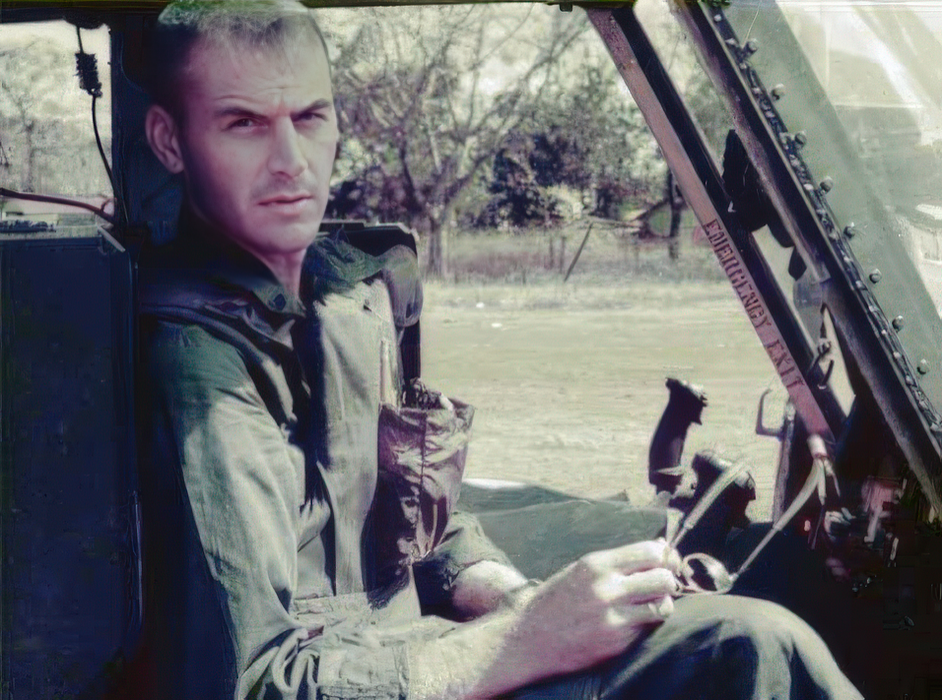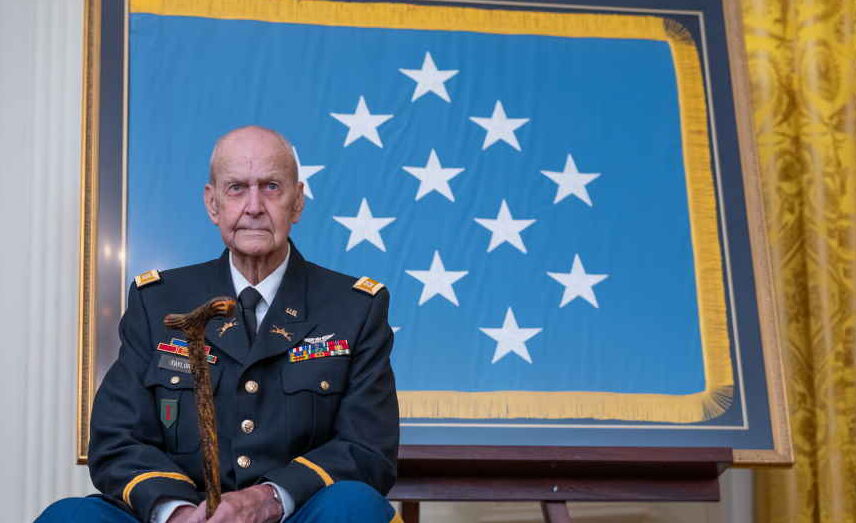Larry Taylor’s family had a long history of military service. His great-great-grandfather fought in the Civil War, his great-uncle fought in World War I, and his father and uncles served during World War II. When Larry attended the University of Tennessee in Knoxville, he joined the school’s Reserve Officers Training Corps (ROTC) and carried on his family’s longstanding military tradition.

Larry L. Taylor Begins His Journey in the Vietnam War
When he began his studies in 1962, the United States had only a token involvement in the uncertain future of South Vietnam. By the time he graduated in 1966, the U.S. was fully committed, with more than 380,000 ground troops in the country. Initially, he was commissioned as an armor officer. Though he graduated from the Army’s armor school, he knew he could do more flying helicopters.

Because of his critical moment of self-reflection, he would lead a daring rescue under heavy fire, saving the lives of his fellow soldiers and performing an extraction that had never before been attempted. For his courage and gallantry, he received the Silver Star, but after decades of encouragement from supporters, President Joe Biden upgraded that award to the Medal of Honor.
Larry Taylor Faced Intense Combat During the Vietnam War
When Larry Taylor graduated from college, helicopters were still a relatively recent battlefield innovation. They had seen action in the Korean War, but their scope was limited to practical actions, like medical evacuations, troop transports, and logistics. In the Vietnam War, their role was much expanded.
The air mobility helicopters provided to the Army allowed units to provide their own tactical and logistical support as well as firepower, perfect for the jungles and guerrilla fighting in Vietnam. It can be said that the airmobile capabilities of the helicopter defined the Vietnam War, moving troops to quickly reinforce and resupply positions, providing close air support in combat, and saving some 390,000 lives that would have otherwise been battlefield casualties.

Larry Taylor already had a pilot’s license before joining the Army, and with helicopters being so important in combat operations, it’s easy to see why the Army would send a newly-minted armor officer to pilot training. By June 1967, he was an Army aviator, and two months later, he was in Bien Hoa Air Base, part of the 1st Squadron, 4th Cavalry Regiment, 1st Infantry Division.
Larry Taylor Is Awarded the Medal of Honor for Bravery
His career in Vietnam over the next few months reflects the intensity of the war up until that point. The Viet Cong and North Vietnamese had the initiative and began adapting their tactics to counter the superior firepower of the American forces. The increased attacks from communist guerrillas came to a head in January 1968 when North Vietnam launched the Tet Offensive, a massive, coordinated series of attacks that struck American bases and South Vietnamese cities and towns all over the country.

Throughout his time in the war, Larry Taylor engaged the enemy 340 times in more than 2,000 combat missions, was forced down five times, and received an astonishing 61 combat decorations, including 44 Air Medals, the Vietnamese Cross of Gallantry, two Bronze Stars and four Distinguished Flying Crosses. His biggest day came on June 18, 1968, when a four-man long-range reconnaissance patrol (LRRP) team called him for help.
Then-1st Lt. Taylor commanded a team of two Cobra gunships when the LRRP began calling. When the Cobras arrived, the ground forces were outnumbered by a numerically superior Viet Cong force, so Taylor and the helicopters went to work. They fired illumination rounds into the enemy force and began calling in artillery support. Then, in the middle of intense enemy fire, the gunships made dangerously close passes of machine guns and rocket attacks for more than 45 minutes.

With their ammunition nearly exhausted and the enemy forces still coming on strong, Taylor flew the LRRP team’s evacuation route and found it was crawling with Viet Cong. The soldiers on the ground would not be able to extract according to plan. The helicopters, realizing the situation was now dire, began making fake gun runs using their searchlights in order to give the Americans some breathing room.
They then used the last of their machine gun ammunition to clear a path: Larry Taylor was going to extract the team with his gunship, even though there was no room in the actual helicopter. The soldiers climbed aboard his gun pods and skids, a rescue attempt that had never even been tried before – but it worked. He carried them to the safety of a nearby water treatment plant, where other Americans were waiting for them.
After landing, the men climbed off, ran in front of Taylor’s Cobra, lined up, and saluted before running off into the night. Taylor was awarded a Silver Star for his courage and quick thinking. Some 55 years later, President Joe Biden upgraded that award to the Medal of Honor, presenting it to Larry Taylor on Sept. 5, 2023, in a White House ceremony. It was just in time: Larry Taylor died of cancer at his home in Tennessee in January 2024.
Read About Other Profiles in Courage
If you enjoyed learning about Larry L. Taylor, we invite you to read about other profiles in courage on our blog. You will also find military book reviews, veterans’ service reflections, famous military units and more on the TogetherWeServed.com blog. If you are a veteran, find your military buddies, view historic boot camp photos, build a printable military service plaque, and more on TogetherWeServed.com today.

What a brave soldier. God has a special place for you.